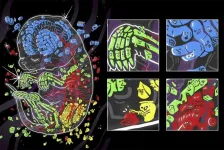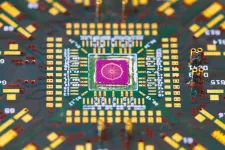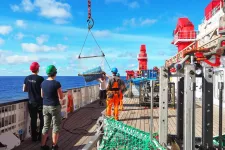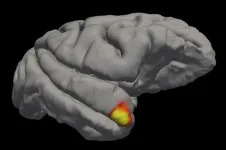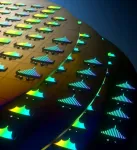Special issue: Our plastics dilemma
2021-07-01
(Press-News.org) Although plastics have become an essential material, permeating almost all aspects of modern living, many of the inherent properties that make them useful in such a wide variety of applications also make them a serious environmental threat. In a special issue of Science, "Our Plastics Dilemma," four Reviews, two Perspectives, a Policy Forum, an associated Report and two News features examine a wide range of topics related to plastics and the problems they present. "As for much new technology, their development and proliferation occurred with little consideration for their impacts, but now it's impossible to deny their dark side as we confront a rapidly growing plastic pollution problem," writes Science Senior Editor, Jesse Smith. "The time for preventing plastic pollution is long past - the time for changing the future of plastics in our world, however, is now."
Estimates of the amount of plastic floating at the ocean surface (measured in the hundreds to thousands of metric tons) only represent a small fraction of what is suspected to be annually discharged by rivers worldwide (several million metric tons). This has led some to speculate a large, yet-unidentified plastic sink that could help explain the rapid removal of river-sourced plastics from the ocean's surface. In the associated Report in this special issue, Lisa Weiss and colleagues show that this missing sink may not even exist. Weiss et al. performed a large-scale statistical reanalysis on updated data on microplastics. "We came to the conclusion that previous flux estimates contained several serious errors," Weiss explains in a related video. She and colleagues say that previous mass fluxes of microplastics were overestimated by two to three orders of magnitude, explaining why the residence time of plastics in the oceans appeared so short. Based on these findings, the authors suggest that the average residence time of microplastics at the ocean's surface could be as high as several years, rather than a few days. The results imply that ocean plastics have more time than previously thought to degrade at the surface before becoming entrained in seafloor sediments. Based on their results, "the need for a missing plastic sink becomes outdated and... unnecessary," says author Wolfgang Ludwig in the video.
In a pair of Perspectives, experts highlight the problematic history of early bio-based plastics and how designing future plastics for both chemical assembly and disassembly is essential to achieving an effective circular plastics economy. According to Rebecca Altman, early bioplastics - the broad category of plastics made from bio-based feedstocks like corn, sugar or wood - were neither clean nor green. Lessons from their overlooked and misunderstood past could help inform the future of greener, biodegradable plastics and plastic technology. Sarah Kakadellis and Gloria Rosetto highlight the technical, chemical, and biological routes to closing the plastic resource loop by designing plastics to be more broadly recyclable or biodegradable in the environment. "The fallacy of mechanical recycling has already taught us that technology alone will not and cannot solve the plastic pollution crisis. No silver bullet solution exists for the multifaceted nature of plastic pollution," write the authors. "Only through committed action and coordination across the value chain will a sustainable future for plastics be secured," write Kakadellis and Rosetto.
A Policy Forum by Nils Simon and colleagues argues the need for a binding global agreement to address plastic's long lifecycle and to combat plastic pollution. According to Simon et al., the international community has tended to view the plastics problem as an ocean- and/or waste-focused problem. However, plastics are ubiquitously found in increasing amounts worldwide, including in terrestrial environments and even inside the human body. The authors call for a new international treaty that addresses these concerns thought the entire lifecycle of plastics, from the extraction of the raw materials needed for its manufacture to its legacy pollution.
The special issue also includes four Reviews that discuss the rapidly rising global threat that steadily accumulating plastic pollution poses for the environment, the evolutionary and ecological consequences of widespread plastic ingestion by wildlife, how plastics are best understood as emergent geomaterials with unique synthetic chemistries not previously seen in Earth's history, and how innovations in plastic recycling and polymer upcycling could help address our plastics dilemma and usher in the next generation of materials design. In addition, two features from Science's news department explore how enzymes are being used to aid in plastic recycling efforts and the ways in which museum conservationists are trying to preserve the plastic objects in their exhibits.
INFORMATION:
ELSE PRESS RELEASES FROM THIS DATE:
2021-07-01
Through the sequencing of more than 640,000 human exomes, researchers identify rare gene coding variants strongly associated with body mass index (BMI) - including the variant GPR75, which conferred protection from obesity in mouse models. Not only do the findings provide potential therapeutic targets for treating obesity, but they also demonstrate the power and versatility of massive-scale exome sequencing in discovering rare coding variants that could offer new and potentially translatable biological functions. Body fat is a highly heritable trait and the obesity to which body ...
2021-07-01
Researchers could not confirm that a feature that supposedly signals the presence of Majorana bound states - the unusual quasiparticles that may become the cornerstone of topological quantum computing - was in fact due to elusive Majorana particles, in full-shell semiconductor/superconductor nanowires. Rather, this feature, known as zero bias conductance peak, can arise from another quantum phenomenon in these hybrid nanowire structures, the authors say. In recent years, intense research has been conducted on nanowire-based semiconductor-superconductor hybrid systems because predictions suggest that a topological superconductor state with Majorana zero modes (MZMs) can be engineered from them. Even though several experiments in such platforms have reported ...
2021-07-01
Researchers introduce "sci-Space," a new approach to spatial transcriptomics that can retain single-cell resolution and spatial heterogeneity at scales much larger than previous methods. They used their approach to build single-cell atlases of whole sections of mouse embryos at 14 days of development. Single-cell RNA sequencing methods have led to great advances in understanding how organisms and complex tissues develop. Although cells' spatial organization is central to normal development, homeostasis, and pathophysiology, many single-cell RNA sequencing methods lose valuable contextual spatial information. Those that preserve spatial context between cells can be limited to a specific set of genes and/or ...
2021-07-01
A new technique called sci-Space, combined with data from other technologies, could lead to four-dimensional atlases of gene expression across diverse cells during embryonic development of mammals.
Such atlases would map how the gene transcripts in individual cells reflect the passage of time, cell lineages, cell migration, and location on the developing embryo. They would also help illuminate the spatial regulation of gene expression.
Mammalian embryonic development is a remarkable phenomenon: a fertilized egg divides repeatedly and turns, in a matter of weeks or months, into a complex organism capable of a myriad of physiological processes and composed of a variety ...
2021-07-01
Quantum computers promise great advances in many fields - from cryptography to the simulation of protein folding. Yet, which physical system works best to build the underlying quantum bits is still an open question. Unlike regular bits in your computer, these so-called qubits cannot only take the values 0 and 1, but also mixtures of the two. While this potentially makes them very useful, they also become very unstable.
One approach to solve this problem bets on topological qubits that encode the information in their spatial arrangement. That could provide a more stable ...
2021-07-01
Current rates of plastic emissions globally may trigger effects that we will not be able to reverse, argues a new study by researchers from Sweden, Norway and Germany published on July 2nd in Science. According to the authors, plastic pollution is a global threat, and actions to drastically reduce emissions of plastic to the environment are "the rational policy response".
Plastic is found everywhere on the planet: from deserts and mountaintops to deep oceans and Arctic snow. As of 2016, estimates of global emissions of plastic to the world's lakes, rivers and ...
2021-07-01
Scientists have long searched in vain for a class of brain cells that could explain the visceral flash of recognition that we feel when we see a very familiar face, like that of our grandmothers. But the proposed "grandmother neuron"--a single cell at the crossroads of sensory perception and memory, capable of prioritizing an important face over the rabble--remained elusive.
Now, new research reveals a class of neurons in the brain's temporal pole region that links face perception to long-term memory. It's not quite the apocryphal grandmother neuron--rather than a single ...
2021-07-01
The COVID-19 catastrophe in India has resulted in more than 30 million people infected with the virus and nearly 400,000 deaths, though experts are concerned that the figures most likely are much higher. Meanwhile, another public health crisis has emerged along with COVID-19: the widespread misuse of antibiotics.
During India's first surge of COVID-19, antibiotic sales soared, suggesting the drugs were used to treat mild and moderate cases of COVID-19, according to research led by Washington University School of Medicine in St. Louis. Such use is considered inappropriate because antibiotics are only effective against bacterial infections, not viral infections such as COVID-19, and overuse increases the risk ...
2021-07-01
Fifteen years ago, UC Santa Barbara electrical and materials professor John Bowers pioneered a method for integrating a laser onto a silicon wafer. The technology has since been widely deployed in combination with other silicon photonics devices to replace the copper-wire interconnects that formerly linked servers at data centers, dramatically increasing energy efficiency -- an important endeavor at a time when data traffic is growing by roughly 25% per year.
For several years, the Bowers group has collaborated with the group of Tobias J. Kippenberg at the Swiss Federal Institute of Technology (EPFL), within the Defense Advanced Research Projects Agency (DARPA) Direct On-Chip Digital Optical ...
2021-07-01
Optical frequency combs consist of light frequencies made of equidistant laser lines. They have already revolutionized the fields of frequency metrology, timing and spectroscopy. The discovery of ''soliton microcombs'' by Professor Tobias Kippenberg's lab at EPFL in the past decade has enabled frequency combs to be generated on chip. In this scheme, a single-frequency laser is converted into ultra-short pulses called dissipative Kerr solitons.
Soliton microcombs are chip-scale frequency combs that are compact, consume low power, and exhibit broad bandwidth. Combined with large spacing of comb "teeth", microcombs are uniquely ...
LAST 30 PRESS RELEASES:
[Press-News.org] Special issue: Our plastics dilemma
